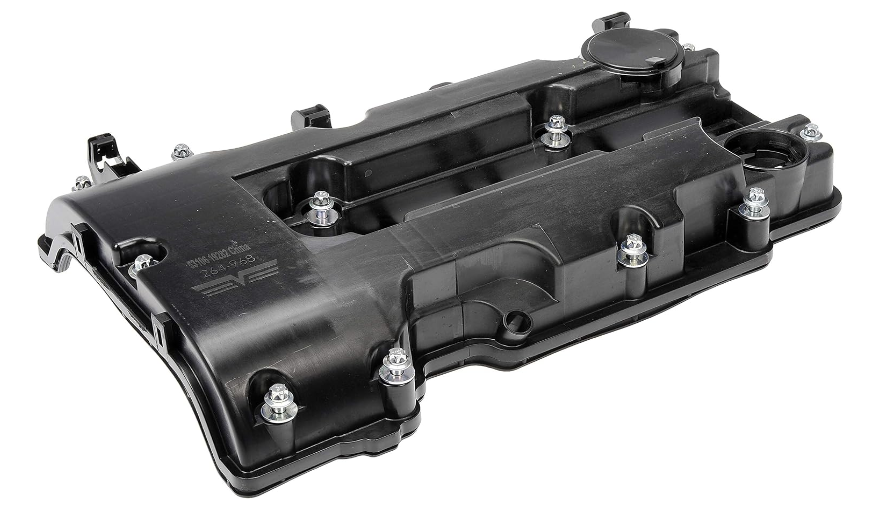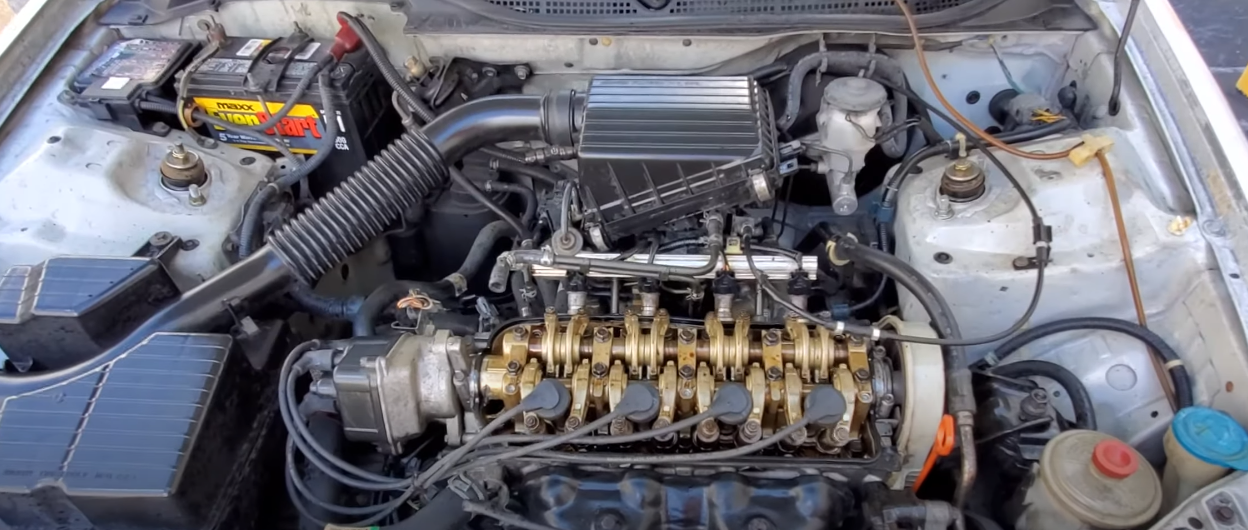Running an engine without a valve cover is generally not recommended, except for very brief diagnostic purposes. The valve cover prevents oil from splashing out and protects the engine from contaminants. Without it, oil will spill, and the engine becomes exposed to dirt, potentially leading to significant damage. Only run the engine without the valve cover in controlled, short-duration situations.
Running an engine without its valve cover is a subject of curiosity among automotive enthusiasts and mechanics alike. The valve cover, sometimes called a rocker cover, is a simple yet essential part of an engine. Its primary function is to seal the top of the engine and protect vital components, including the valve train, from debris and contaminants. While it might seem harmless to run an engine briefly without the valve cover, there are several significant factors to consider before attempting such a scenario.
Contents
Why Would Run an Engine Without a Valve Cover?
There are very few legitimate reasons to run an engine without the valve cover, but sometimes it might be done for diagnostic purposes or troubleshooting. Here are some common reasons:
1. Troubleshooting Valve Train Issues
If there’s a strange noise coming from the valve train, such as tapping or knocking, removing the valve cover might give a mechanic visual access to identify problems like a broken valve spring, misaligned rocker arm, or oiling issues.
2. Oil Flow Inspection
Running the engine without the valve cover can help assess whether the camshaft and rocker arms are getting adequate oil. If a mechanic suspects that the top of the engine isn’t receiving sufficient lubrication, removing the valve cover while the engine is running can help diagnose the issue.
3. Adjusting Valves
In engines with adjustable valve lifters, running the engine briefly without the valve cover might allow a mechanic to make fine-tuned adjustments to the valves while the engine is running.
4. Curiosity or Experimentation
Some enthusiasts may remove the valve cover simply out of curiosity or to experiment. While this might be done for learning purposes, it should be approached with extreme caution and ideally under controlled circumstances.

What Happens if Run Engine Without Valve Cover?
Running an engine without a valve cover exposes crucial internal components, making the engine vulnerable to a number of issues.
1. Oil Splash and Loss
When the engine is running, oil is pumped to the top of the engine to lubricate the camshaft and valves. Without a valve cover in place, oil will be flung out of the engine, creating a mess and causing significant oil loss. The longer the engine runs, the more oil is lost, which can quickly lead to low oil levels and even engine damage.
2. Risk of Contaminants Entering the Engine
The valve cover protects the valve train from contaminants like dust, dirt, and debris. Running the engine without it exposes these components to harmful particles, which can lead to accelerated wear and even catastrophic engine damage over time.
3. Potential for Damage to Other Components
Without the valve cover, oil can splash onto other components under the hood, including electrical parts, sensors, and belts. This can lead to malfunctions and even engine fire hazards in severe cases. Furthermore, without the valve cover, moving parts like the camshaft and valves are exposed, making it dangerous for anyone to be near the engine while it is running.
4. Increased Oil Consumption
Running an engine without a valve cover will cause a rapid loss of oil, which not only results in a mess but also can cause the engine to consume oil at an alarming rate. This can lead to oil starvation, overheating, and even engine seizure if not addressed immediately.
5. Reduced Engine Efficiency
Since oil lubricates and cools the components in the valve train, the rapid loss of oil can result in reduced engine performance and efficiency. The friction from insufficient lubrication will cause the engine to work harder, increase fuel consumption, and decrease overall engine life.
Is It Safe to Run an Engine Without a Valve Cover?
In most situations, it is not safe or advisable to run an engine without a valve cover. The risks far outweigh any potential benefits unless it is absolutely necessary for a very brief diagnostic procedure. Even then, running an engine without a valve cover should be done in a controlled environment and with extreme care to avoid damaging the engine or creating safety hazards.
Situations Where It Might Be Permissible
- Short-term testing for diagnostics: If you need to briefly start the engine to troubleshoot an issue like oil flow or valve train noise, it may be done for a minute or two. However, this should only be done with the knowledge that the engine will throw oil everywhere, and you risk contamination.
- Valves adjustments: Some mechanics may run the engine for a brief moment to make valve adjustments in real-time. Even then, they often take extra precautions to minimize oil loss and protect the engine.
Best Practices to Run the Engine Without a Valve Cover
If you absolutely must run the engine without the valve cover for diagnostic or adjustment purposes, here are a few tips to minimize the risks:
- Only run the engine for a very short time: Limit the duration to 30 seconds to 1 minute, as any longer will result in significant oil loss.
- Cover the surrounding area with protective material: Oil will spray everywhere, so it’s essential to cover nearby components to prevent them from getting soaked with oil.
- Work in a clean environment: Ensure the area around the engine is clean and free of dirt and debris, as the engine is highly vulnerable to contamination without the valve cover.
- Keep tools and hands away from moving parts: With the valve cover removed, the valve train is exposed, and it’s crucial to keep fingers, tools, and other objects far away from the moving parts to avoid injury or damage.
- Check the oil level before and after: Running the engine without the valve cover will cause oil loss, so be sure to check and replenish the oil level afterward to prevent long-term engine damage.
Frequently Asked Questions
Here are some FAQs about running car without valve cover –
1. Can you run a car without a valve cover?
Technically, yes, but only for a very short time and under controlled circumstances, such as when diagnosing valve train issues or checking oil flow. Running the engine without a valve cover for an extended period can lead to oil loss, contamination, and severe engine damage.
2. What happens if you drive without a valve cover?
Driving without a valve cover would be disastrous. Oil would spill out, leading to a rapid decrease in oil levels, severe contamination, and ultimately catastrophic engine failure.
3. How long can you run an engine without a valve cover?
It’s advisable to limit the time to no more than 30 seconds to 1 minute. Any longer risks oil loss and potential damage to the valve train due to lack of lubrication.
Conclusion
While it is technically possible to run an engine without its valve cover, it is highly inadvisable except for very short diagnostic tests or valve adjustments. The valve cover serves a crucial role in maintaining engine cleanliness, preventing oil loss, and ensuring the valve train operates efficiently.
Running an engine without it poses serious risks, including oil spillage, contamination, and engine damage. Always take proper precautions and limit the duration when performing any procedure that requires the valve cover to be removed.
